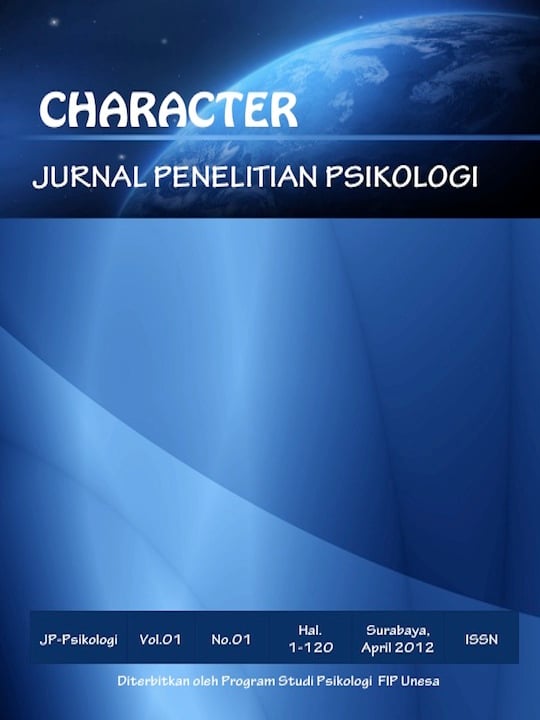PERBEDAAN SENSE OF BELONGINGNESS DITINJAU DARI JALUR SELEKSI PADA MAHASISWA UNIVERSITAS NEGERI SURABAYA
DOI:
https://doi.org/10.26740/cjpp.v8i9.41922Abstract
Abstrak
Penelitian ini bertujuan untuk mengetahui apakah terdapat perbedaan sense of belongingness ditinjau dari jalur seleksi pada mahasiswa Universitas Negeri Surabaya. yang digunakan dalam penelitian ini adalah pendekatan kuantittif, dengan metode komparatif. Subjek penelitian adalah mahasiswa aktif (Fakultas Ilmu Pendidikan (FIP), Fakultas Ilmu Sosial dan Hukum (FISH), dan Fakultas Ekonomi (FE)). Simple random sampling digunakan oleh peneliti untuk mengambil mahasiswa yang masuk Unesa dari jlur SNMPTN, SBMPTN, dan SPMB/Mandiri, dan diperoleh sebanyak 654 subjek. Instrumen PSSM (adaptasi Fadilah, Maslihah dan Misbach, 2018) digunakan untuk melihat perbedaan sense of belongingess pada mahasiswa. Teknik analis data menggunakan Teknik analisa varians. Berdasarkan hasil analisis data menunjukkan bahwa terdapat perbedaan sense of belongingness ditinjau dari Jalur Seleksi pada mahsiswa Universitas Negeri Surabaya. Hal ini diperoleh dari nilai signifikansi sebesar 0.003 (Sig. < 0.05). Manfaat dari penelitian ini adalah dapat digunakan sebagai refrensi bagi universitas untuk mengembangkan atau meninjau ulang program kegiatan yang dimiliki untuk membantu meningkatkan sense of belongingness pada mahasiswa yang diterima melalui Jalur Seleksi baik SNMPTN, SBMPTN, maupun SPMB/Mandiri. Selain itu dapat bermanfaat sebagai bahan refrensi tambahn bagi peneliti yang ingin mendalami topik serupa dilingkungan serupa.
Kata Kunci: sense of belongingness, jalur seleksi, mahasiswa
Abstract
This study aims to determine whether there is a difference in the sense of belongingness in terms of the selection pathway among students of the State University of Surabaya. The approach used in this research is a quantitative approach, with a comparative method. Research subjects are active students (Faculty of Education (FIP), Faculty of Social Sciences and Law (FISH), and Faculty of Economics (FE)). Simple random sampling was used by researchers to take students who entered Unesa from the SNMPTN, SBMPTN, and SPMB/Mandiri lines, and obtained 654 subjects. The PSSM instrument (adaptation of Fadilah, Maslihah and Misbach, 2018) was used to see differences in the sense of belonging among students. Data analysis techniques use variance analysis techniques. Based on the results of the data analysis, it shows that there is a difference in the sense of belongingness in terms of the Selection Pathway for students at the State University of Surabaya. This is obtained from a significance value of 0.003 (Sig. <0.05). The benefit of this research is that it can be used as a reference for universities to develop or review their program of activities to help increase the sense of belonging to students who are accepted through the Selection Pathway, both SNMPTN, SBMPTN, and SPMB / Mandiri. In addition, it can be useful as additional reference material for researchers who wish to explore similar topics in similar environments.
Keywords: sense of belongingness, selection path, college student.
Downloads
Downloads
Published
How to Cite
Issue
Section
License
Authors who publish in this journal agree to the following terms:
Copyright in any article is held by the author.
The author grants the journal, publication rights with the work simultaneously licensed under a Creative Commons Attribution License that allows others to share the work with an acknowledgment of the work's authorship and initial publication in this journal.
Authors may enter into separate, additional contractual arrangements for the non-exclusive distribution of the journal's published version of the work (e.g., posting it to an institutional repository or publishing it in a book), with an acknowledgment of its initial publication in this journal.
Authors are permitted and encouraged to post their work online (e.g., in an institutional repository or on their website) prior to and during the submission process, as this can lead to productive exchanges, as well as earlier and greater citation of published work.
 Abstract views: 343
,
Abstract views: 343
, PDF Downloads: 256
PDF Downloads: 256





